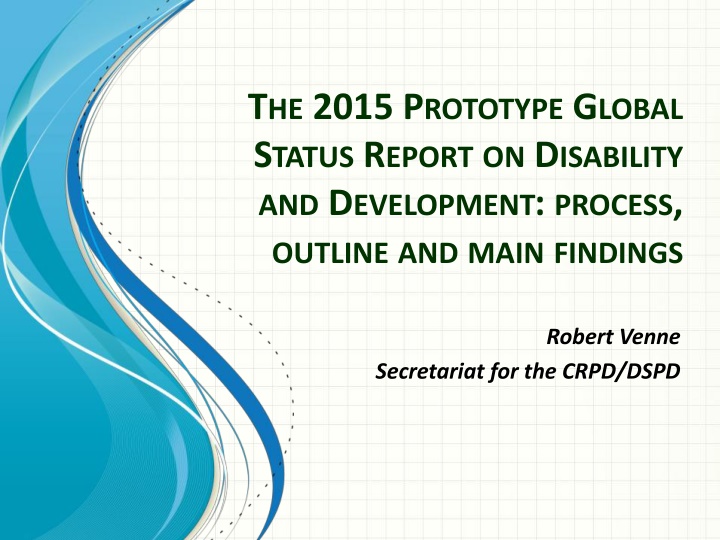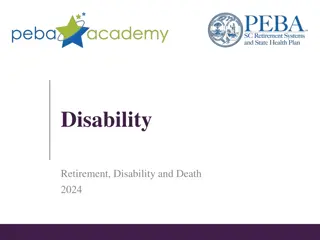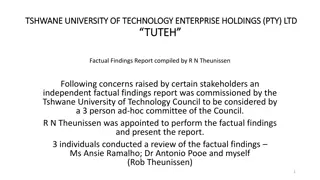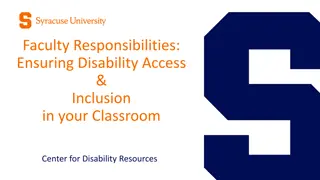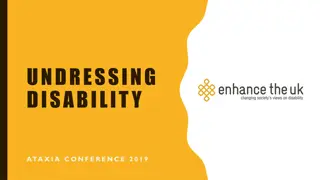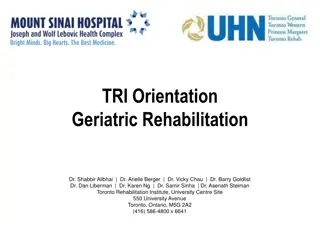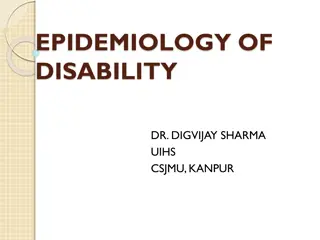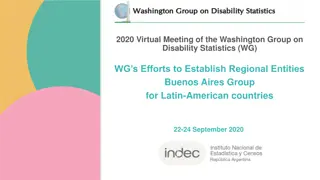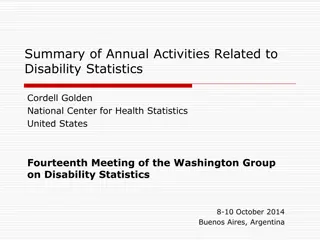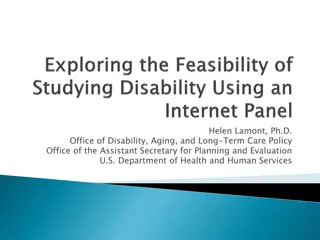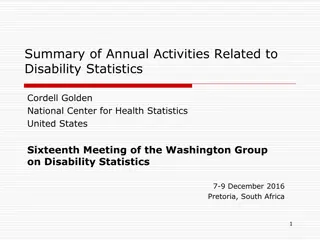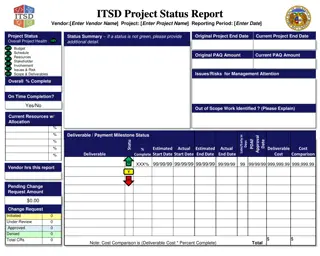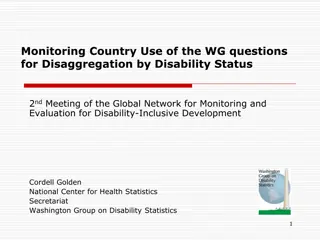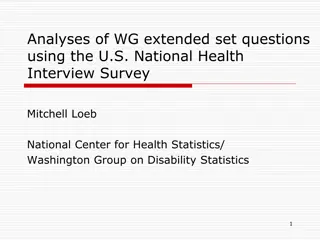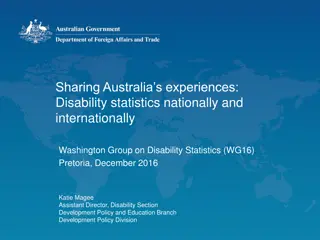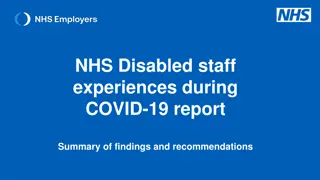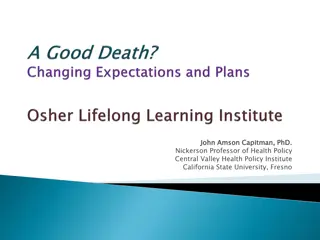2015 Global Status Report on Disability and Development: Findings and Recommendations
The report outlines the process of conceptualization and organization, focusing on historical context, defining disability, and examining various aspects such as education, health, employment, social protection, and inclusivity for different groups. Major findings highlight existing gaps in accessibility and inclusion, especially for women, refugees, and indigenous populations.
Download Presentation

Please find below an Image/Link to download the presentation.
The content on the website is provided AS IS for your information and personal use only. It may not be sold, licensed, or shared on other websites without obtaining consent from the author.If you encounter any issues during the download, it is possible that the publisher has removed the file from their server.
You are allowed to download the files provided on this website for personal or commercial use, subject to the condition that they are used lawfully. All files are the property of their respective owners.
The content on the website is provided AS IS for your information and personal use only. It may not be sold, licensed, or shared on other websites without obtaining consent from the author.
E N D
Presentation Transcript
THE 2015 PROTOTYPE GLOBAL STATUS REPORT ON DISABILITY AND DEVELOPMENT: PROCESS, OUTLINE AND MAIN FINDINGS Robert Venne Secretariat for the CRPD/DSPD
Planning the report Conceptualization of report within SCRPD and in consultation with OD Contacting various UN agencies and programmes for contributions at the end of 2014 Receiving positive responses from UNESCO, WHO, ILO, UN Women, UNICEF, and colleagues from DSPD Hiring of consultants
Organization of the Report Chapter I Historical overview of the UN s work and normative framework on disability and development Chapter II Defining disability Measuring disability and data collection Prevalence of disability Overview of the socio-economic status of people with disabilities Accessibility
Organization of the Report Chapter III Education Health and well-being Employment Social Protection
Organization of the Report Chapter III Women and girls Children Youth Older persons Indigenous persons Refugees Persons with intellectual and mental disabilities
Organization of the Report Chapter III Disability-inclusive Disaster Risk Reduction and Humanitarian Response Persons with disabilities in human settlements and urban development
Organization of the Report Chapter IV Sustainable Development Goals and Disability Monitoring and Evaluation Financing for Disability-Inclusive Development Disability-inclusive international development cooperation Annex Statistical annex
Major findings The gap between PwD and PwoD remains in all areas analyzed in the report (education, health, employment, social protection, resilience to disasters, urban settlements) Few data exists on accessibility but existing studies point to low levels of accessibility in public buildings and governmental websites Those who are doubly disadvantaged (women, refugees, indigenous) experience the lowest levels of inclusion and participation Data is lacking and available internationally comparable data is old SDGs offer new opportunity for advancing a disability-inclusive development agenda
Major findings - examples Can not afford health care Employed to working-age population % % without disabilities 60 80 with disabilities with disabilities 50 53 60 65 without disabilities 40 53 30 40 34 20 30 20 10 20 0 0 Men Women
Next steps Review by editorial board of DESA Editing, design and type-setting Online release on December 3, International Day of Persons with Disabilities Publication of hard copies in January/February 2016
